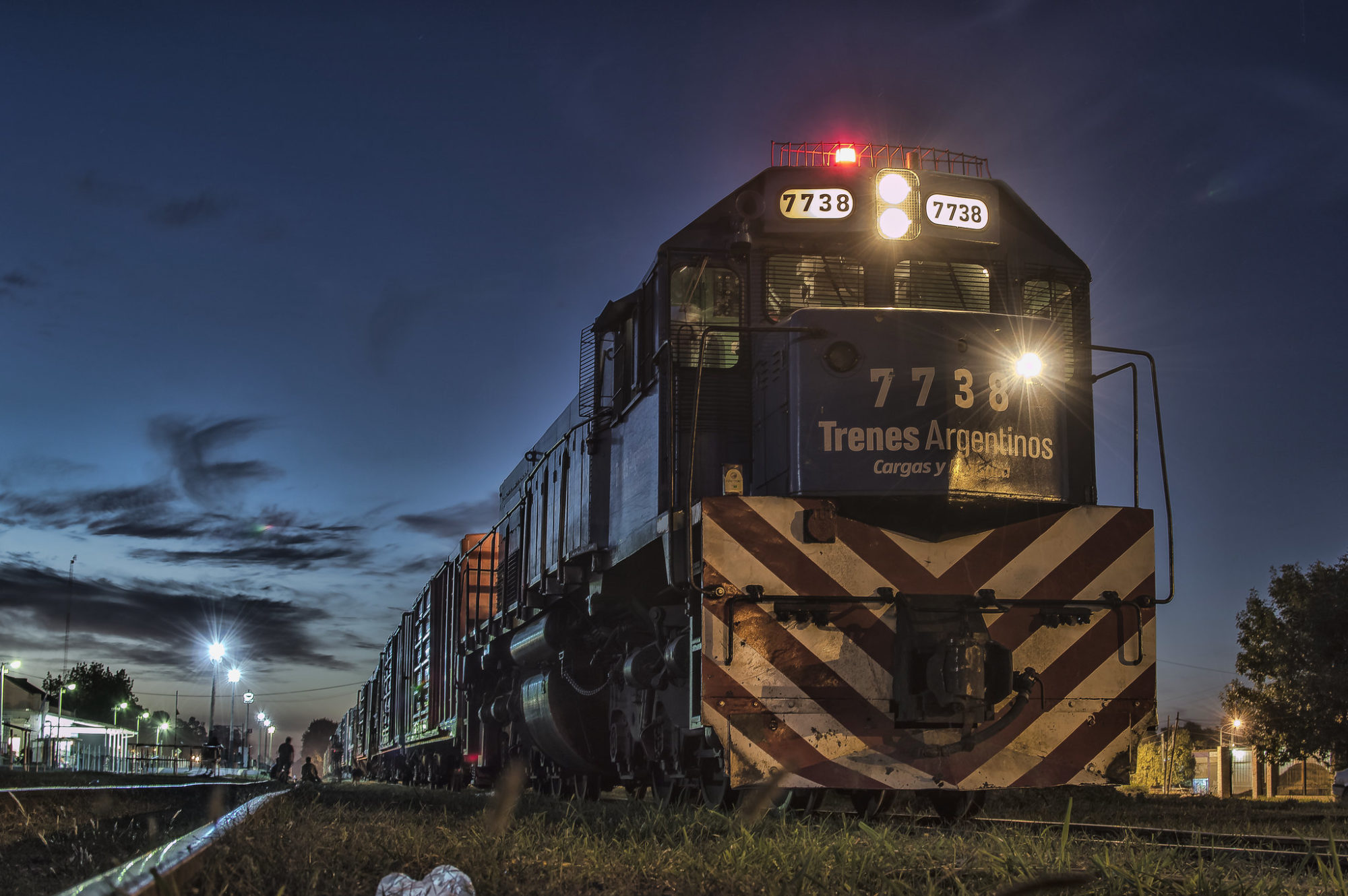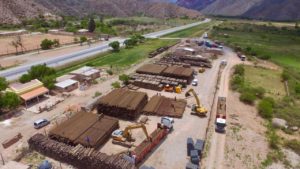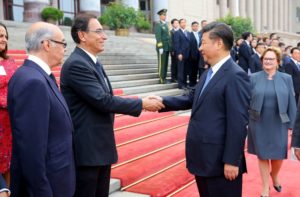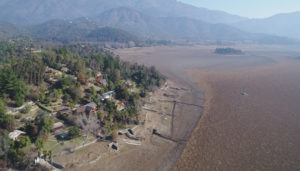Latin America has chronically under-invested in infrastructure. Currently, only 3% of the region’s GDP is channeled towards vital transport and logistics projects, instead of the recommended 6% – a gap it has tried to close with China’s help.
However, Chinese-backed projects, especially rail, have faced numerous obstacles in Latin America, with huge investment announcements not materialising, yet never officially cancelled either.
50%
of all Latin American transport projects linked to Chinese companies since 2002 have progressed
Of the 150 transport projects in which China has expressed an interest since 2002, only half have progressed at all, according to the Inter-American Dialogue.
“China likes making announcements and Latin America is also a fan – holding a conference, launching a project and then seeing what happens,” said Leonardo Stanley, a researcher at Argentina’s Center for State and Society Studies (CEDES).
“But the projects are not well planned and collapse as soon as the first problems appear.”
Investment needs
Between 2000 and 2017, Chinese companies or investors participated in 69 Latin American infrastructure projects worth a total US$56 billion. These generated 400,104 direct and indirect jobs, according to a study by researchers Enrique Dussel Peters and Ariel Armony.
China is a newcomer to the region with railways and still has a hard time getting acquainted with domestic and regional policies
The projects, concentrated in Argentina, Bolivia, Brazil, Ecuador and Venezuela, are only a portion of an extensive list of those announced that ultimately never advanced.
Chinese rail projects feature prominently.
“It’s hard to find a project that’s officially declared dead,” said Ricardo Barrios, of the Asia and Latin America program at the Inter-American Dialogue. “It would mean they’d have to admit that it was not possible and that nobody wants to have to do that, especially Chinese companies.”
Legal problems and opposition from local communities, are just some reasons why such proejcts fail, according to Diego Leiva of Griffith University, who will soon publish research on the subject.
“China is a newcomer to the region with railways and still has a hard time getting acquainted with domestic and regional policies. It has had bad results but has enormous potential. Its objective is to consolidate itself in the Latin American rail market,” he said.
Problems with Chinese rail in Latin America
Beyond long-shelved plans for “dry canals” in Colombia and Honduras, a Venezuelan bullet train, the Mexico City-Querétaro link and the Bioceanic railroad that would connect Peru, Bolivia and Brazil are further examples of derailed Chinese transport investments.
The Venezuelan government and China Railway Group signed a contract in 2009 to develop the 471-kilometre Tinaco-Anaco high-speed train. The first Chinese rail project in Latin America, the project would cost US$7.5 billion and traverse four states.
$7.5billion
the projected cost of Venezuela's proposed Tinaco-Anaco railway
However, problems soon appeared.
Venezuela, soon found itself facing economic difficulties after the crash in global oil prices and abandoned projects soon after laying the tracks since it couldn’t meet financial commitments to the Chinese company.
“China’s experience with high-speed trains indicates the most viable routes are those that connect metropolitan areas and have a stable electricity supply. Those conditions did not exist in Venezuela,” Haibin Niu, a researcher at the BRICS Policy Center, wrote in Building Development For a New Era.
Colocacion primer riel tren tramo Tinaco – Anaco @la_iguanatv construido por @ifetren y @crecv #trenaltavelocidad pic.twitter.com/Xe6hU5Txmk
— CRECV (@CRECV) April 22, 2014
More commercially viable than the Venezuela line given the government’s fiscal capacity and the larger number of potential users, Mexico held a 2014 tender to build a 210-kilometre high-speed train from Mexico City to emerging tourist hotspot Querétaro.
The project was awarded to China Railway Construction Corporation Limited (CRCC) and its local partners. But the government of Enrique Peña Nieto soon cancelled the contract amidst allegations of irregularities.
“The real reason was the public and opposition questioning the lack of transparency of the tender,” said Niu. “Analysing the failure, observers stressed that the Chinese company should have paid more attention to civil society and political opposition.”
Niu also highlights the delayed Bioceanic train, an idea first mooted around the turn of the century to connect the Atlantic coast of Brazil with the Pacific coast of Peru. Chinese representatives agreed in 2015 with the governments of the region to develop feasibility studies to make the investment.
China Railway Eryuan Engineering Group (CREEC), the Chinese company behind the initiative, said in 2017 the project was feasible, after carrying out a US$50 million study. Nevertheless, Brazil’s state-run rail operator Valec warned over the impact of the project.
Indigenous communities and environmental groups are concerned that the routes under consideration would bisect communal territories and pristine biomes.
“Every infrastructure project has many social, political, environmental and labour variables, many of which Chinese companies have failed to handle properly,” according to Dussel Peters.
Lessons learned
Experts say that despite the problems with Chinese rail in Latin America, companies have learned some lessons when investing in infrastructure. Now, they better understand the region’s legal and political realities, and can adapt to them.
“In certain areas we saw improvement. Some companies have been able to interact with the different groups involved and have managed to develop complex projects,” said Barrios, who added that Chinese lenders tend to make financing conditional on using a certain contractor.
“There’s usually no room for change,” he said.
In Argentina, where Chinese railway investment has not followed this pattern, it has fared better.
Without getting involved in construction, China Development Bank granted a loan of US$2.1 billion in 2013 for the renovation of part of the Belgrano Cargas train and locomotives. The branch has strategic importance because its connects with the agricultural heartland.
If it is not possible to improve the quality of the projects, we’ll encounter more failures
Phases of the project were successfully completed in 2015 and 2018, leading to finance being renewed several times. This was despite a radical change in government in 2015 and subsequent review of Chinese projects.
Of the 1,700 kilometers of track, 1,200 have already been renovated and the remaining 500 are being laid.
“Unlike other projects, China’s approach was positive. It managed to get into the Argentine market, which demonstrates a learning process. It is a more modest and feasible project that did not imply that China takes over both design and construction,” Leiva said.
Today, 19 Latin American and Caribbean countries now officially endorse China’s Belt and Road initiative (BRI), which could unlock further finance to meet infrastructure needs.
BRI aims to expand China’s foreign investment by reviving old, and establishing new land and sea routes.
“Latin America has needs and demands and China has the possibility to meet them. The Belt and Road initiative will be central by having a focus on infrastructure,” said Dussel. However, he stressed that plans for the sector should be well thought-out.
“If it is not possible to improve the quality of the projects, we’ll encounter more failures.”









